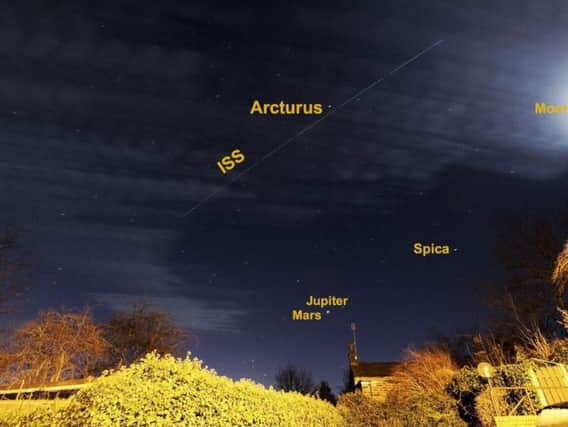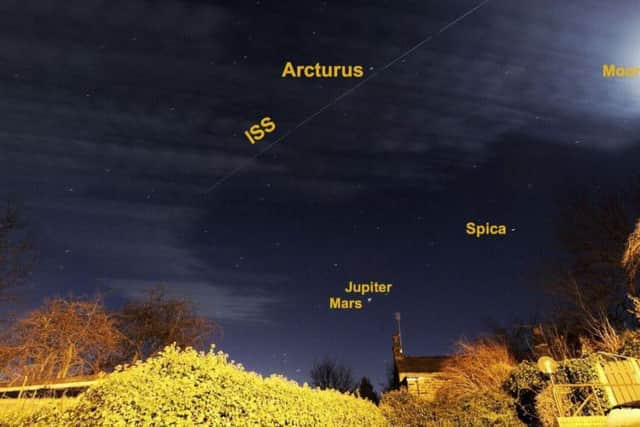VIDEO: Amateur astronomer captures rare cosmic phenomenon from Sheffield car park as Mars and Jupiter align


Michael Barnes was up early this morning to watch Mars and Jupiter appear alongside one another - a planetary conjunction which is not due to be repeated until 2020.
The 35-year-old, who works in customer services for a catalogue company shot this amazing video and photos of the celestial treat from a car park near his home in Walkley.
Advertisement
Hide AdAdvertisement
Hide Ad

"I got up at 5am but waited a while for the clouds to shift before heading to a car park round the back of my house looking out over the city," he said.
"It was amazing to see something like this because it doesn't happen very often. The pictures don't really do it justice.
"I could clearly see the stripes on Jupiter using my telescope, which only cost around £150, and you could see how orange Mars is.
"It really shows how much you can see using a basic telescope."
Advertisement
Hide AdAdvertisement
Hide Ad

Despite being separated by 369 million miles, the planets appeared very close together this morning, looking like two very bright stars to the naked eye.
The conjunction, known as a syzygy, was described by one leading astronomer as 'uncommonly beautiful'.